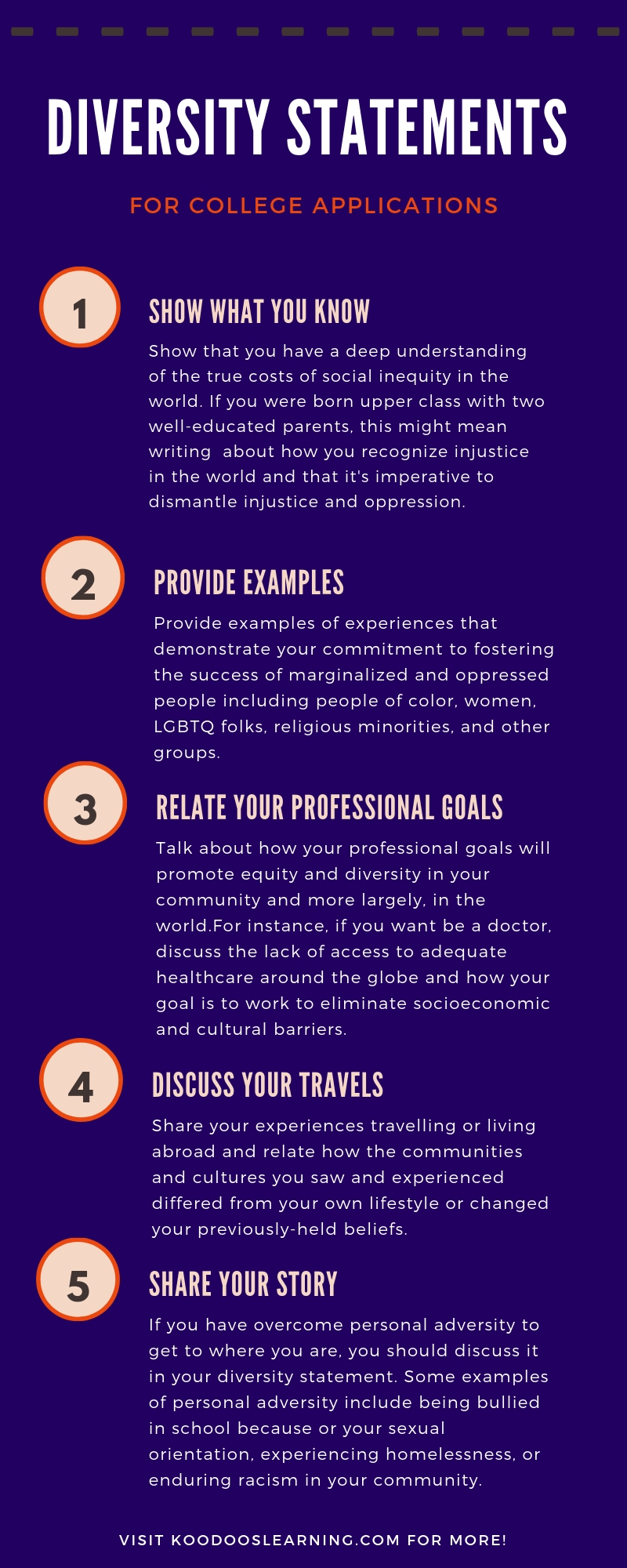You Too Can Write a Good Diversity Statement for Your College Applications. Here's How.
Today, almost all college applications for school in the U.S. require applicants to submit a diversity statement, or short response essay related to diversity, with their application submission. In addition providing a personal statement, the University of Washington, for instance, asks freshman applicants to respond to the prompt:
But why do colleges want you to submit a diversity statement in the first place you ask?
Well UW states on their website, that the university “strives to create a community of students richly diverse in cultural backgrounds, experiences, values and viewpoints.” For this reason, admissions officers look to admit applicants who will embrace and enrich the multicultural and intentionally inclusive environment colleges strive to be. So, without a face to face interview, submitting a diversity statement is the most straightforward means to assess your openness and ability to foster a culture of diverse identities and viewpoints on campus.
As an admissions professional, I sometimes get asked the question, “For someone who is white and middle class, how can I write about how I will bring diversity to my school?” Well, let me tell you. It’s possible to do and it’s possible to do it without treating the diversity statement as a throwaway part of your application. Don’t simply write about, for example, how you like to eat ethnic food or play soccer with people of color. These topics, for the most part, don’t show a genuine interest or commitment to diversity and equity.
As a means of jump starting your brainstorming process, here are 5 ways to write an effective diversity statement for your college admissions applications:
1. Show what you know.
Show that you have a deep understanding of the true costs of social inequity in the world. If you were born upper class with two well-educated parents, this might mean writing about how you recognize injustice in the world and that it's imperative to dismantle injustice and oppression. You can supplement this information by sharing your core values, especially those that relate to inclusion, diversity, and equity for all people.
2. Provide examples.
Provide examples of experiences that demonstrate your commitment to fostering the success of marginalized and oppressed people including people of color, women, LGBTQ folks, religious minorities, and other groups. Discuss any volunteer work, projects or research you’ve done on behalf of marginalized communities. Did you build an app that helps disabled people navigate city streets. Did you create a nonprofit that donates school supplies to kids who families who can’t afford to buy them?
3. Relate your professional goals.
Talk about how your professional goals will promote equity and diversity in your community and more largely, in the world. For instance, if you want to be a doctor, discuss the lack of access to adequate healthcare around the globe and how your goal is to work to eliminate socioeconomic and cultural barriers that prevent people from receiving care.
4. Discuss your travels.
Share your experiences travelling or living abroad and relate how the communities and cultures you saw and experienced differed from your own lifestyle or changed your previously-held beliefs. Just be sure not to “otherize” the places and people you discuss. Also, be sure to avoid cliches or describing your experiences as shocking in some way. You don’t want to come off as naive or judgmental to admissions officers. Try relating how your travel experiences informed your personal development and impacted your views on culture and diversity. If you grew up outside the United States, you might discuss what cultural aspects of living and going to school in the U.S. interests you.
5. Share your story.
If you have overcome personal adversity to get to where you are, you should discuss it in your diversity statement. Some examples of personal adversity include the loss of a parent or close relative, experiencing homelessness, immigrating to a new country, or enduring racism in your community. If, on the other hand, you were raised with relatively little to no adversity, socioeconomic or otherwise, it’s important to acknowledge your privilege. It's possible to talk intelligently about diversity, even if you are a straight white male, by demonstrating that you have the awareness and desire to work to dismantle inequity, and encourage diversity as a means of promoting inclusion.
Overall, keep your statement focused on communicating your beliefs about diversity, equity, and inclusion, and no matter who you are, you should be able to write an effective diversity statement. Good luck.

























